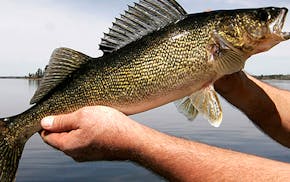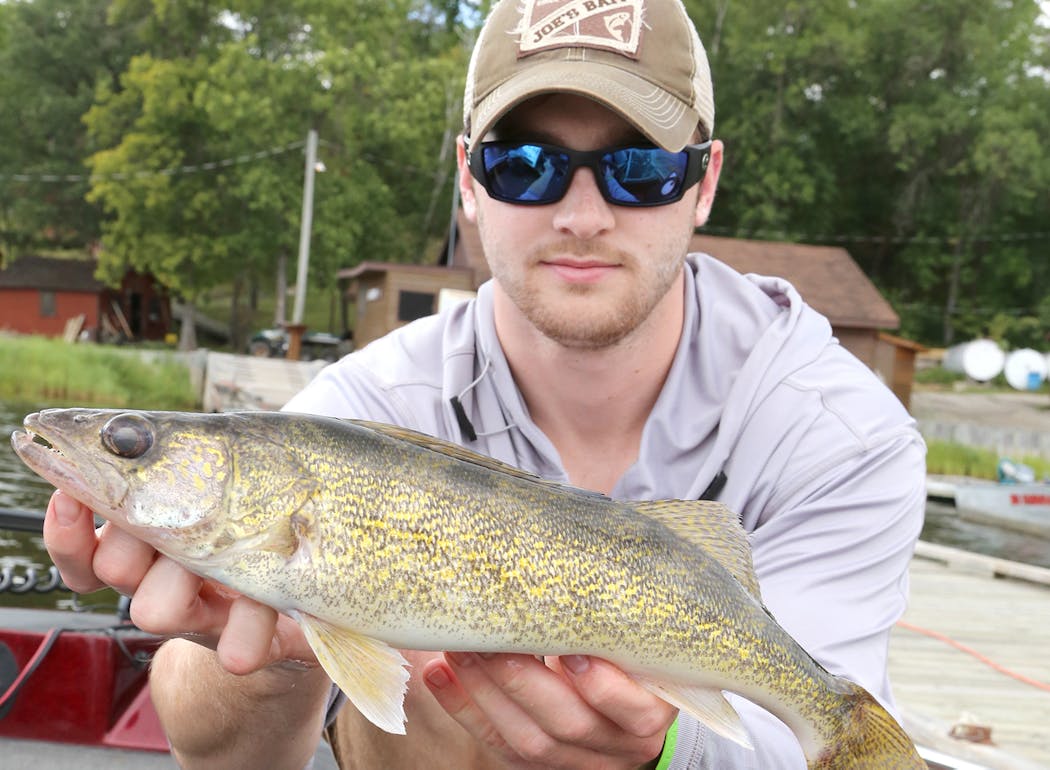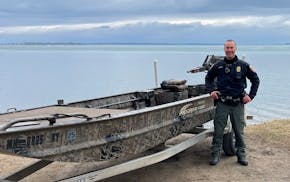Like any cop making a traffic stop, Ben Huener was alert when he and another Minnesota Department of Natural Resources conservation officer, Coby Fontes, approached a fishing boat recently while patrolling Lake of the Woods.
Three men were in the boat, each from Wisconsin, and after Huener and Fontes introduced themselves they asked to see the anglers' licenses, which checked out.
Then they asked about the fishing.
It's been good, the Wisconsin men said.
How many fish the men had, or didn't have, was important information the officers would weigh as they motored across the huge lake and talked to multiple boatloads of anglers.
Conservation officers (COs) aren't biologists who set season lengths and bag limits. But COs play key roles nevertheless in fish and game management, ensuring that the vast majority of hunters and anglers pursue their quarry while obeying the law.
Were it otherwise — if too many anglers, for instance, kept too many fish — a lake's harvest goals would be exceeded and its fishery could be depleted.
The stakes are particularly high on Lake of the Woods because few lakes in the state — indeed, few in the nation — receive the intense angling pressure it does.
In 2012, for example, in winter alone the Minnesota side of Lake of the Woods received 1.6 million angler hours of pressure, according to DNR area fisheries manager Matt Skoog.
By 2022, that number had jumped to 2.6 million.
Add another 700,000 or so angler hours of summer pressure and you have a lake — fertile as it is with healthy populations of smallmouth bass, muskies and northern pike, as well as walleyes and saugers — that requires everyone to stay within their lanes, as it were.
Biologists must accurately gauge fish populations and set season lengths and bag limits accordingly. Conservation officers must enforce those restrictions so harvest goals aren't exceeded. And anglers must play by the rules.
The stakes are especially high because in some years, fish experience poor reproduction.
Brett Nelson, the DNR large lake specialist assigned to Lake of the Woods, said chilly springs and cool summers often contribute to years in which relatively few fish hatch or mature to adulthood.
"The 2018 year class of walleyes in the lake was good, for example, and it represents most of the walleyes that anglers are catching in Lake of the Woods this summer,'' Nelson said. "The year before that was weaker, and the year after it was weaker. But the last two year classes are looking average to good.''
Huener, the CO, grew up in the border region and has been patrolling Lake of the Woods since 2008. His partner, Fontes, is newer on the beat, having graduated from the most recent CO academy offered by the DNR Enforcement Division.
Talking to the three Wisconsin anglers, Huener and Fontes learned the men were staying on shore in an RV. Because they suspected a possible over-limit of fish, they accompanied the anglers to their campsite.
"The vast majority of people we deal with on Lake of the Woods are great and are fishing legally,'' Huener said. "But there's a minority of people we encounter several times a season who intentionally keep over-limits. These aren't people who make an honest mistake and are off an eighth of an inch when measuring a walleye. These people are intentionally breaking the law.''
A couple of summers ago, Huener and another CO, Corey Sura, checked four Minnesota anglers at the Wheeler's Point public access on the Rainy River, which empties into Lake of the Woods.
An initial inspection of the anglers' live well found the group was two fish over their combined limit of 24 walleyes and saugers. A further look-see in the back of the men's pickup found another 46 walleyes and saugers, for a total of 72 — or 48 over their legal limit.
Six COs regularly patrol Minnesota's portion of Lake of the Woods, but if widespread illegal activity is suspected, officers will be brought in from elsewhere in the state.
That happened in 2014, when the DNR sent 40 COs to Lake of the Woods, pinching, in the end, some two dozen anglers. Many were "double-tripping,'' or keeping one limit of fish and storing them on shore, before returning to the lake to catch another limit — or two.
A fish possession limit in Minnesota means just that: A person is allowed only one limit of a regulated fish species at a time.
Meaning whether you catch four walleyes one day (for example, if that's a given lake's walleye limit) and put them in your freezer or catch one walleye on each of four days and similarly store them, you can possess no more walleyes until you eat or legally give away one or more of the fish.
Regulations governing bird hunting are different. In most cases both daily and possession limits are allowed, with the latter usually double (or more) of the former, so long as the possession limit is taken over two or more days.
"When we followed the Wisconsin men back to shore we learned they had two friends there who they had been fishing with, and in all the group had 60 walleyes and saugers, when they were allowed only 30,'' Huener said.
The COs cited the anglers for over-limits and also charged two of the men with impeding their investigation — charges that, like the over-limits, are misdemeanors.
"Law enforcement officers have a right to investigate suspected illegal activity and it's a violation to interfere with that,'' Huener said. "If there's fish or game that is illegally taken and you're trying to hide it so we can't find it, you're interfering.''
So, headed to Lake of the Woods?
Remember, Rule No. 1 is to follow the rules.
Specifically, on the Minnesota side, the walleye and sauger limit is six combined, with no more than four being walleyes, each of which must be under 19.5 inches, with one allowed over 28 inches.
Anderson: Minnesota's million anglers should be convinced that Boundary Waters is worth protecting

You asked, and we answered our audience's questions about Minnesota's fishing opener.






